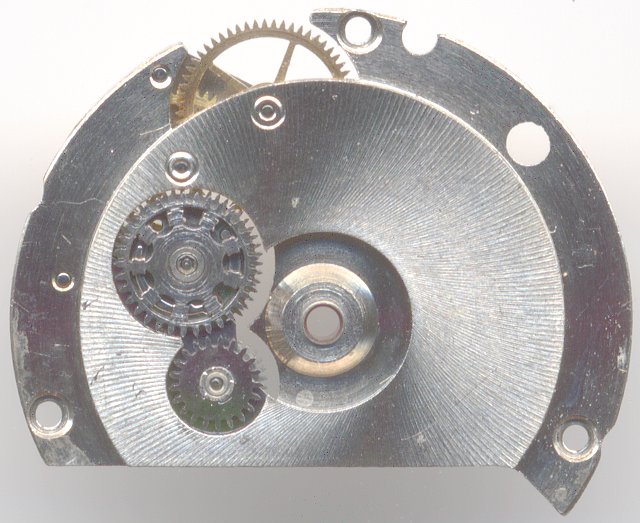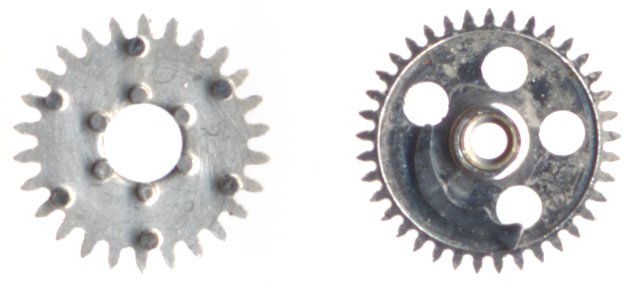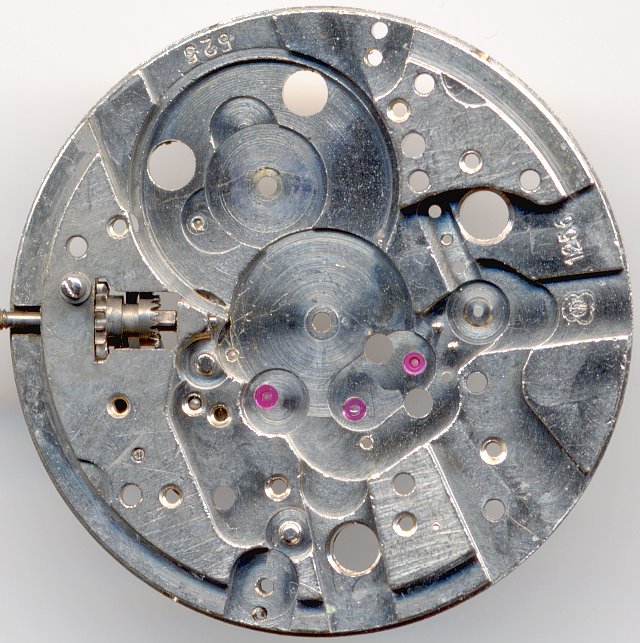Description
The ETA 1256, which debuted 1950, was the first selfwinding movement of the Grenchen manufactury. It already used a very modern selfwinding mechanism, which winds the movement in both directions.
The ETA 1256 is the prime father of all ETA selfwinding movements ever made.
Video on YouTubeThe specimen shown here was also used by Benrus under their own caliber name CF 1.
Video on YouTubeThe spring less click reverser with double click wheel allowed, that the oscillating weight winds in both directions.
Video on YouTubeThe spring less click reverser with double click wheel allowed, that the oscillating weight winds in both directions.
The oscillating weight is beared on a conical shaped axle, which avoids running out bushings. This very effective type of bearing was used until in the sixties, ETA used ball bearings.
The oscillating weight wheel always turns the outermost winding up wheel (at “4”) and the upper pawl winding wheel (at “2”). The tricky part is now, that the upper(!) pawl winding wheel corresponds with the driving gear (at “1:30”), while the lower pawl winding wheel is connected to the outermost winding wheel. According to the turning direction of the oscillating weight, both pawl winding wheel run either synchronously or the upper wheel spins freely, while the lower wheel is driven and thus reverses the direction.
The ETA 1256 bases on the “old” movement family with directly driven minute hand, of which for example the ETA 1081 is a member.
Its screw balance (which is beared in the specimen shown here in a patented Benrus shock protection) beats with contemporary slow 18000 A/h.
The hairspring (here in the beautiful top class Nivarox-I-type) is still fix connected to the balance cock and can be regulated due to the shock protection system on the hairspring key only.
The movement bridges look a bit like a prototype, especially with all its cutted out parts. In terms of quality, this pallet lever movement, whose 17 jewels are all used in the time works, it is very good one!
Under the loupe, you can see the two parts of the pawl winding wheel: In one direction, the click runs freely, in the other one, it is blocked by the “dots” and drives the other wheel.
On the dial side, you see nex to the Benrus inhouse shock protection the yoke winding system, whose setting lever spring has got only one hole.
As on many old movements, a partial minute dial is engraved, which allows a regulation of the movement without mounted dial. This was helpful in times, when not every shop had got a timegrapher.
Timegrapher result
The specimen shown here, was completely gummed and showed signs of water damage. It had to be cleaned and overhauled competely.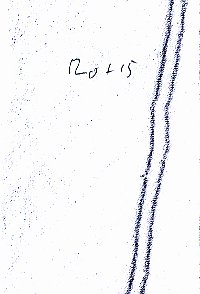
crown right (12 up)
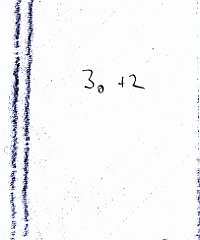
crown up (3 up)

crown left (6 up)

crown down (9 up)
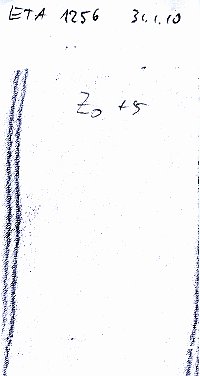
dial up
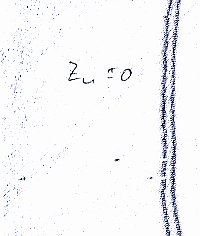
dial down
Technical data
| Manufacturer: | ETA |
| Caliber: | 1256 |
| Size: | 11 1/2''' (measured: 25,5mm) |
| A/h: | 18000 |
| lift angle: | 52.23° |
| Number of jewels: | 17 |
| Escapement: | Pallet lever |
| Balance types: |
Nickel screw balance |
| Shock protection(s): |
? |
| Balance bearing / direction hairspring: | Clockwise |
| Moveable stud: | no |
| Adjust mechanism: | Hairspring key |
| Construction: |
|
| Construction type: | solid construction |
| Winding mechanism: | yoke winding system |
| Setting lever spring: | 1 hole(s) |
| Features: |
|
| Production period: | 1950-1954 |
| References: |
Flume: 1952 64 |
| Mentioning in literature (years): | 1959 |
| Production years: | 1950-1961 |
| Production figures: | 1.760.102 (1256, 1257, 1258, 1259) |
| Documentation (years): | 1953 |
Links
- Alliance Horogere: Technical DataSheets ETA 1256
- US Patent #2456071 - Shock Absorbing Device For Pivots (Patent of the Benrus shock protection shown here)
- Ranfft Uhren: ETA 1256 (The specimen shown there is the “standard” ETA 1256, not the Benrus type.)

